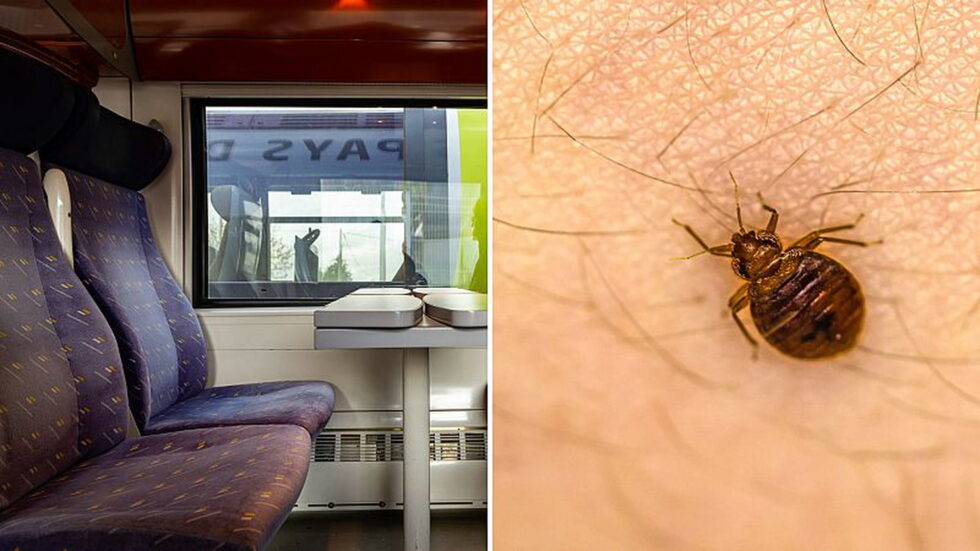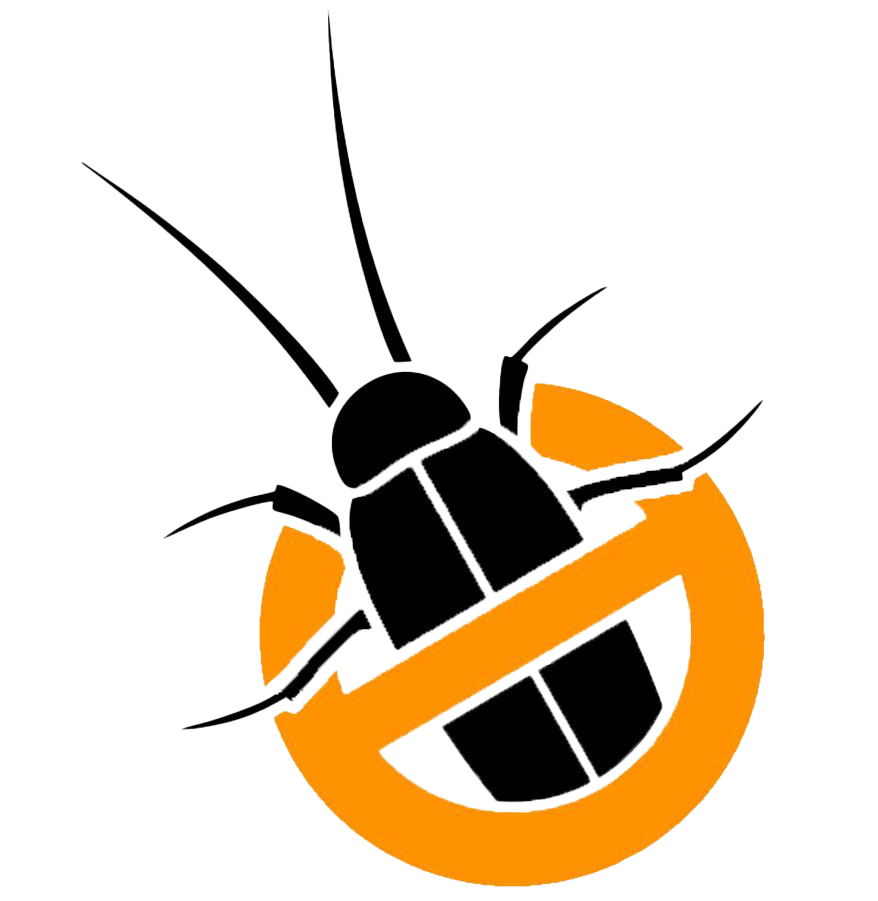Bed Bugs in the Bed: An Unwanted Nightmare
Imagine waking up in the middle of the night, feeling itchy and uncomfortable, only to discover that bed bugs in the bed are the cause of your distress. These tiny, blood-sucking pests can turn your peaceful slumber into a nightmare, leaving you with bites, rashes, and a constant feeling of unease. In this article, we will explore the world of bed bugs, their identification, infestation control, bite symptoms and treatment, prevention tips, and their impact on health and lifestyle.
Bed bugs are small, oval-shaped insects that feed on the blood of humans and animals. They are nocturnal creatures, which means they are most active during the night when their hosts are asleep. Bed bugs can be found in various places, but they are most commonly found in beds, hence the name. They can hide in mattresses, bed frames, headboards, and even in the seams of your bedding.
Having bed bugs in the bed is not only a nuisance but also a potential health risk. Their bites can cause allergic reactions, skin infections, and even psychological distress. Moreover, bed bugs are known to be resilient and can be challenging to eliminate completely. Therefore, it is crucial to be well-informed about these pests and take appropriate measures to prevent and control their infestations.
Identifying Bed Bugs: Appearance and Signs
Recognizing the appearance of bed bugs and being aware of the common signs of their presence is crucial for early detection and effective control. Adult bed bugs are small, oval-shaped insects, typically measuring 4-5 millimeters in length. They have a reddish-brown color, which may appear darker after feeding. Bed bug nymphs, or immature bed bugs, are smaller and lighter in color, making them harder to spot. Baby bed bugs, also known as first instar nymphs, are nearly transparent and about the size of a pinhead.
When identifying bed bugs, it is essential to differentiate between male and female bed bugs. Female bed bugs have a more rounded abdomen, while males have a more pointed abdomen. This distinction is important because female bed bugs are responsible for laying eggs, which can lead to a rapid increase in population.
There are several bedbug signs that can indicate their presence in your home. Some of the most common signs include:
- Small, dark fecal spots on bedding, mattresses, or nearby walls
- Shed skins or exoskeletons from molting bed bugs
- Tiny, white eggs or eggshells, usually found in crevices or seams of mattresses and furniture
- A musty, sweet odor, which is emitted by bed bugs’ scent glands
- Visible bites or rashes on your skin, although not everyone reacts to bed bug bites
There are several species of bed bugs, but the most common one is Cimex lectularius. This species is known for its reddish-brown color and preference for human hosts. Other species, such as red bed bugs and rust-coloured bed bugs, may also be encountered, but they are less common.
Being able to see bed bugs and recognize their bed bugs look is essential for early detection and effective control. Regularly inspecting your sleeping area, furniture, and other potential hiding spots can help you identify an infestation before it becomes a significant problem.
Bed Bug Infestation: How to Find and Control
Knowing how to find bed bugs and recognizing a bed bug infestation is crucial for effective control and management. Bed bugs are known to be elusive, and they often hide in hard-to-reach areas. To check for bed bugs, inspect your sleeping area, furniture, and other potential hiding spots regularly. Some common places where bed bugs hide include:
- Seams, folds, and crevices of mattresses and box springs
- Cracks and gaps in bed frames and headboards
- Behind baseboards, electrical outlets, and wallpaper
- Inside furniture, such as dressers, nightstands, and upholstered chairs
- Underneath carpets and rugs
When bed bugs are found, it is essential to take immediate action to control the bed bug problem. There are several methods for eliminating bed bugs, including:
- Thoroughly vacuuming infested areas and disposing of the vacuum contents in a sealed bag
- Washing and drying bedding, clothing, and other infested items at high temperatures
- Using steam cleaning or heat treatment to kill bed bugs and their eggs
- Applying insecticides or bedbug spray specifically designed for bed bug control
- Sealing cracks and crevices to prevent bed bugs from hiding and spreading
In some cases, a bed bug exterminator may be necessary to effectively control bed bugs and remove bed bugs from your home. Professional bed bug management services typically include a thorough bedbug inspection, treatment with specialized bedbug control methods, and follow-up visits to ensure the infestation is eradicated.
To prevent bed bug infestations, it is essential to be vigilant and take proactive measures. Some tips to avoid bringing bed bugs into your home include:
- Inspecting hotel rooms and other accommodations for signs of bed bugs before settling in
- Keeping luggage off the floor and away from beds in hotels and other public spaces
- Regularly inspecting and cleaning second-hand furniture before bringing it into your home
- Sealing cracks and crevices in your home to minimize hiding spots for bed bugs
By understanding how to find bed bugs, recognizing the signs of a bed bug infestation, and taking appropriate measures to control and eliminate bed bugs, you can minimize the risks and impact of these unwanted pests in your home.
Bed Bug Bites: Symptoms and Treatment
Bed bug bites are often the first sign of a bed bug infestation. Recognizing the symptoms of bed bug bites and knowing how to identify a bed bug bite can help you take appropriate action to control and eliminate these pests. In this section, we will discuss the common symptoms, treatment options, health risks, and comparisons with other insect bites.
Common Symptoms of Bed Bug Bites
Bed bug bites can cause various signs and symptoms, including:
- Red, itchy welts or bumps on the skin
- A bed bug rash or bedbug rash characterized by a cluster or line of bites
- Swelling or inflammation around the bite area
- Blood spots on bedding or clothing from crushed bed bugs
It is important to note that some individuals may not experience any symptoms or have a delayed reaction to bed bug bites.
How to Identify a Bed Bug Bite
Identifying bed bug bites can be challenging, as they often resemble bites from other insects, such as mosquitoes or flea bites. However, there are some key differences to look for:
- Bed bug bites are often found in clusters or lines, while flea bites are more randomly distributed.
- Bed bug bites are usually found on exposed skin, such as the face, neck, arms, and legs, while flea bites are more common on the lower legs and ankles.
Treatment Options for Bed Bug Bites
While bed bug bites can be uncomfortable and itchy, they are generally not considered a serious health risk. However, it is essential to treat the area to minimize discomfort and prevent infection. Some bed bug treatment options include:
- Cleaning the bite area with soap and water to reduce the risk of infection
- Applying over-the-counter anti-itch creams or corticosteroid creams to relieve itching and inflammation
- Taking oral antihistamines to help control itching and allergic reactions
- Consulting a pharmacist for additional help with bedbug bites and treatment recommendations
If you experience severe reactions, such as difficulty breathing, swelling of the face or throat, or signs of infection, seek medical attention immediately.
Health Risks Associated with Bed Bug Bites
While most people experience mild symptoms from bed bug bites, there are potential health risks to be aware of:
- Secondary skin infections, such as impetigo, cellulitis, or lymphangitis, can occur if bites are scratched and become infected.
- Rarely, individuals may experience anaphylaxis, a severe allergic reaction that requires immediate medical attention.
- Chronic infestations can lead to sleep disturbances, anxiety, and stress.
Comparison of Bed Bug Bites with Other Insect Bites
As mentioned earlier, bed bug bites can resemble bites from other insects. Here is a brief comparison with some common insect bites:
| Insect | Appearance of Bites | Common Symptoms |
| Bed Bugs | Clusters or lines of red, itchy welts or bumps | Itching, redness, swelling, bed bug rash |
| Fleas | Small, red, randomly distributed bumps | Itching, redness, swelling |
| Mosquitoes | Individual red, raised bumps | Itching, redness, swelling |
By understanding the symptoms and treatment options for bed bug bites, as well as the potential health risks and comparisons with other insect bites, you can take appropriate action to address bed bug infestations and minimize their impact on your health and well-being.
Preventing Bed Bug Infestations: Tips and Tricks
Understanding how bed bugs spread and travel is crucial in preventing infestations. In this section, we will discuss tips to avoid getting bed bugs, how to check a hotel for bed bugs, best practices for bedbug prevention, and the importance of regular bedsheet washing in bed bug prevention.
How Bed Bugs Spread and Travel

Bed bugs are notorious hitchhikers, and they can easily get bed bugs from one place to another by latching onto luggage, clothing, and personal belongings. They can also bed bugs travel between rooms and apartments through cracks and crevices in walls, floors, and ceilings. Understanding the bed bug life stages and their habits can help you take preventive measures to minimize the risk of infestation.
Tips to Avoid Getting Bed Bugs
Here are some practical tips to help you avoid bed bugs and minimize the risk of infestation:
- Check mattress and other furniture for signs of bed bugs, such as live insects, fecal stains, and bed bug eggs.
- Use a bed bug spray or other treatments to kill bed bugs and their eggs on contact.
- Regularly wash bedsheets and other bedding in hot water to kill any bed bugs and their eggs.
- Seal cracks and crevices in walls, floors, and ceilings to prevent bed bugs from spreading between rooms or apartments.
- Use a protective mattress cover to prevent bed bugs from infesting your mattress.
How to Check for Bed Bugs in Hotels
When staying in a hotel, it’s essential to check a hotel room for bed bugs to avoid bringing them home with you. Here are some steps to follow:
- Inspect the mattress, box spring, and headboard for signs of bed bugs, such as live insects, fecal stains, and bed bug eggs.
- Check the seams, folds, and edges of the mattress and other upholstered furniture for bed bugs.
- Examine the luggage rack, nightstands, and other areas where bed bugs may hide.
- Keep your luggage off the floor and away from the bed to minimize the risk of bed bugs hitching a ride on your belongings.
Best Practices for Bed Bug Prevention
Implementing a proactive approach to bedbug prevention can help you avoid infestations and maintain a healthy living environment. Some best practices include:
- Regularly inspecting your home for signs of bed bugs, especially if you have recently traveled or had guests.
- Using a bed bug spray or other treatments to kill bed bugs and their eggs on contact.
- Sealing cracks and crevices in walls, floors, and ceilings to prevent bed bugs from spreading between rooms or apartments.
- Regularly wash bedsheets and other bedding in hot water to kill any bed bugs and their eggs.
- Using a protective mattress cover to prevent bed bugs from infesting your mattress.
Importance of Regular Bedsheet Washing in Bed Bug Prevention
Regularly washing your bed sheets is an essential part of bed bug prevention. Bed bugs can be killed by exposure to high temperatures, so washing your sheets in hot water (at least 120°F or 49°C) can help eliminate any bed bugs and their eggs that may be present. Additionally, washing your sheets can help remove any allergens, dust mites, and other contaminants that may contribute to a healthier sleep environment.
By understanding how bed bugs spread and implementing these tips and tricks, you can effectively prevent bed bug infestations and maintain a healthy, bug-free home.
The Impact of Bed Bugs: Health and Lifestyle
Bed bug behavior and their presence in our living spaces can have significant impacts on both our physical and mental health. In this section, we will discuss the bed bugs impact on health and lifestyle, including how to discover bed bugs, the physical signs of their presence, and the role of bed bug anxiety and bedbug allergy in our lives.
Physical and Mental Health Impacts of Bed Bugs
Bed bugs affect our health in various ways. Their bites can cause itching, redness, and swelling, which can lead to secondary infections if scratched. Additionally, some individuals may develop an allergic reaction to bed bug bites, resulting in more severe symptoms such as difficulty breathing, rapid heartbeat, and even anaphylaxis. The presence of bed bugs can also lead to bed bug anxiety, causing stress, sleep disturbances, and a constant feeling of unease.
How to Diagnose a Bed Bug Infestation
Looking for signs of bed bugs is essential in diagnosing an infestation. Some common bed bug evidence includes:
- Bloodstains on bed sheets: These stains can result from crushed bed bugs or their fecal matter.
- Bed bug exoskeletons: As bed bugs grow, they shed their exoskeletons, which can be found in and around the infested areas.
- Fecal spots: Bed bugs leave behind small, dark fecal spots on bedding, mattresses, and nearby surfaces.
- Live bed bugs: Adult bed bugs are about the size of an apple seed, while nymphs are smaller and more challenging to spot. They are usually found in mattress seams, headboards, and other hiding spots.
If you have seen an insect that resembles a bed bug or noticed any of the above signs, it is crucial to take action and consult a professional to confirm the infestation and recommend appropriate treatment.
The Effect of Bed Bugs on Lifestyle
Bed bugs can significantly impact our daily lives, causing disruptions in sleep, increased stress, and even social isolation due to the stigma associated with infestations. To keep the bedroom free from bed bugs, it is essential to maintain cleanliness, regularly inspect for signs of infestation, and take preventive measures, as discussed in the previous section.
How to Look for Signs of Bed Bugs
Regularly looking for signs of bed bugs can help you detect an infestation early and take appropriate action. Some tips for inspecting your living space include:
- Checking the seams, folds, and edges of mattresses, box springs, and upholstered furniture.
- Inspecting behind headboards, picture frames, and electrical outlets.
- Examining luggage, backpacks, and clothing after traveling or visiting other homes.
- Using a flashlight to inspect dark, hidden areas where bed bugs may reside.
The Role of Bed Bugs in Allergies and Anxiety
As mentioned earlier, some individuals may develop a bedbug allergy due to their bites, leading to more severe symptoms and discomfort. Additionally, the presence of bed bugs can cause bed bug anxiety, resulting in sleep disturbances, stress, and a constant feeling of unease. It is essential to address these issues by seeking medical advice for allergies and practicing stress-reduction techniques to cope with anxiety.
Understanding the impact of bed bugs on our health and lifestyle is crucial in taking appropriate measures to prevent and control infestations, ensuring a comfortable and healthy living environment.
Bed Bug Biology: Understanding the Enemy
Knowing the bed bug biology and their behavior is essential in effectively dealing with an infestation. In this section, we will explore the feeding habits of bed bugs, the significance of bed bug excreta, and how to recognize engorged bed bugs.
Feeding Habits of Bed Bugs
Understanding bed bug feeding habits is crucial in identifying their presence and taking appropriate measures to control them. Bed bugs are nocturnal insects that feed primarily on human blood, but they can also feed on other warm-blooded animals. They use their elongated beak to pierce the skin and extract blood, usually feeding for about 5-10 minutes. Bed bugs can survive for several months without feeding, making them difficult to eradicate.
Bed Bug Excreta and Its Significance
Bed bug excreta, commonly known as bed bug poop, is another vital sign of their presence. After feeding, bed bugs leave behind small, dark fecal spots on bedding, mattresses, and nearby surfaces. These fecal spots are composed of digested blood and can be used to identify infested areas. Regularly inspecting for bed bug excreta can help detect an infestation early and take appropriate action.
The Biology of Bed Bugs
Bed bugs undergo a life cycle that consists of five nymph stages and an adult stage. They require a blood meal to molt and progress to the next stage. The entire life cycle, from egg to adult, takes about 5-8 weeks, depending on temperature and availability of food. Adult bed bugs can live for up to 6-12 months, making it essential to understand their biology and take appropriate measures to control their population.
How to Recognize Engorged Bed Bugs
Recognizing engorged bed bugs can help in assessing the severity of an infestation. After feeding, bed bugs become engorged, increasing in size and changing color from brown to dark red. Engorged bed bugs are easier to spot due to their larger size and distinct color. Regularly inspecting for engorged bed bugs can help in early detection and prompt treatment of infestations.
Armed with the knowledge of bed bug biology and their behavior, you can take effective measures to prevent and control infestations. Remember to seek professional bedbug advice if you suspect an infestation, as they can provide tailored solutions to your specific situation.
Summary
In this article, we have covered the essential aspects of dealing with bed bugs, an unwanted nightmare for many. We have discussed the importance of identifying bed bugs by their appearance and signs, as well as how to find and control a bed bug infestation. We have also explored the symptoms and treatment of bed bug bites and provided tips and tricks for preventing bed bug infestations.
Furthermore, we have delved into the impact of bed bugs on health and lifestyle, and the significance of understanding bed bug biology in effectively dealing with an infestation. By recognizing the feeding habits, excreta, and engorged bed bugs, you can take appropriate measures to prevent and control infestations. Remember to seek professional advice if you suspect an infestation, as they can provide tailored solutions to your specific situation.
With this knowledge, you are now better equipped to tackle the issue of bed bugs and ensure a comfortable and bug-free living environment.



